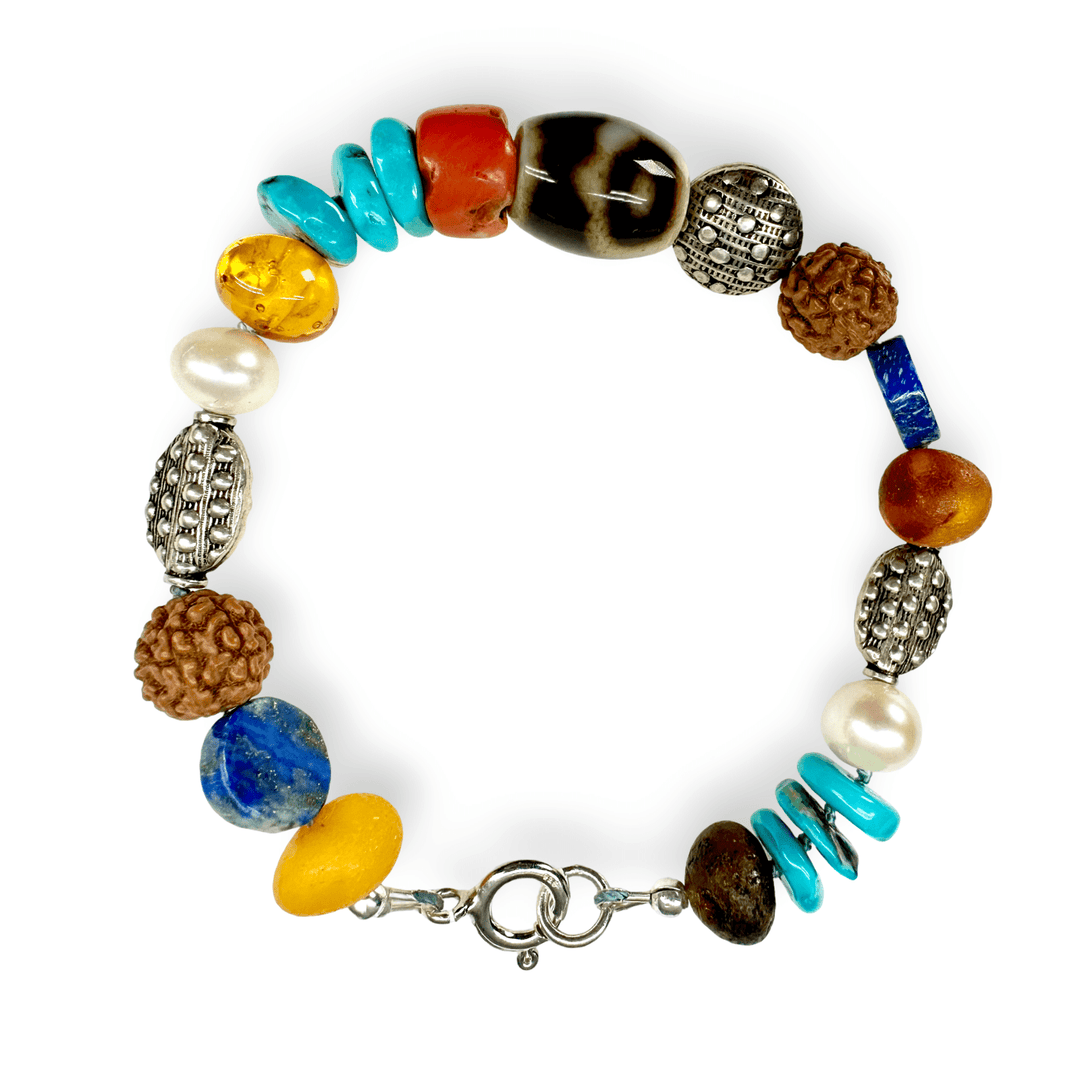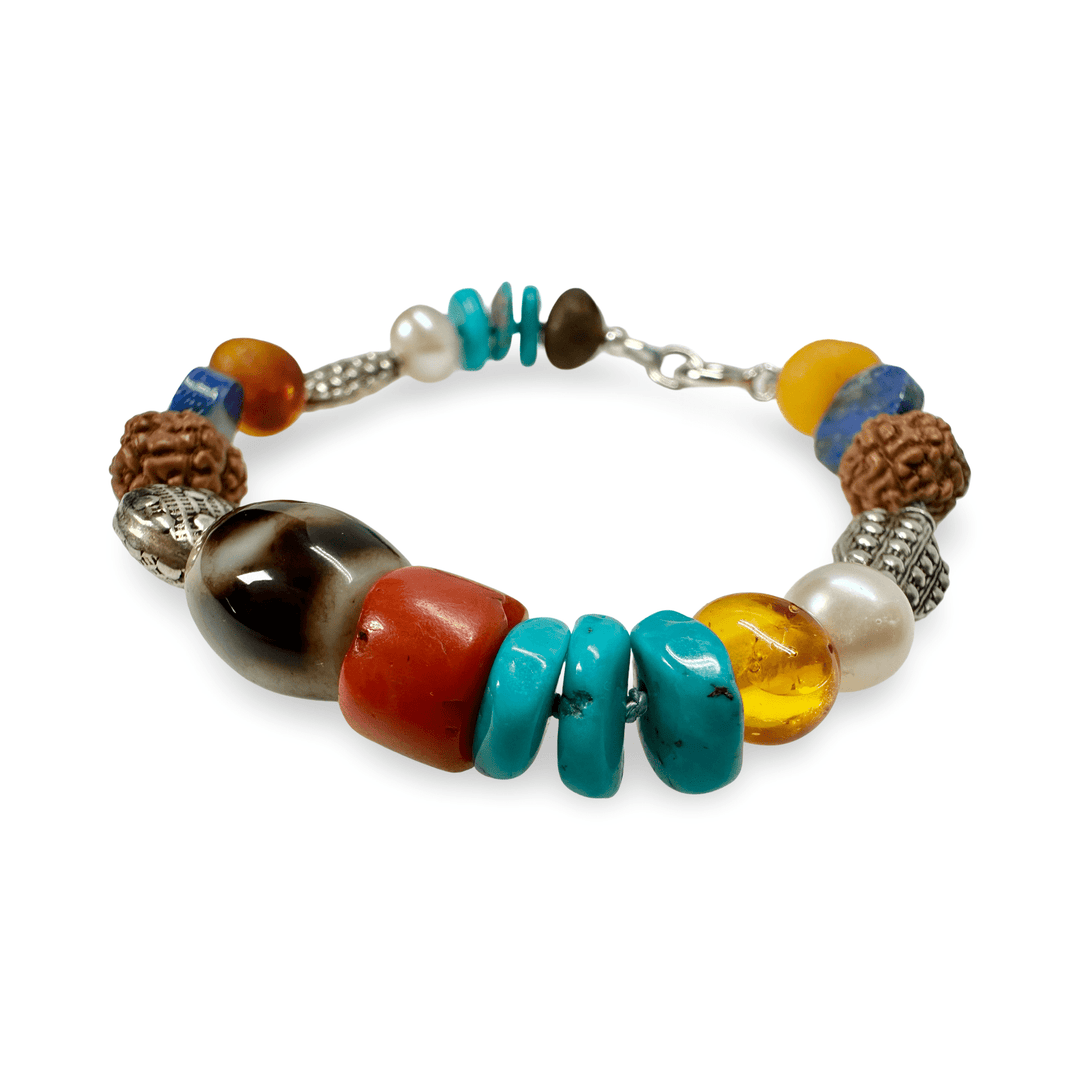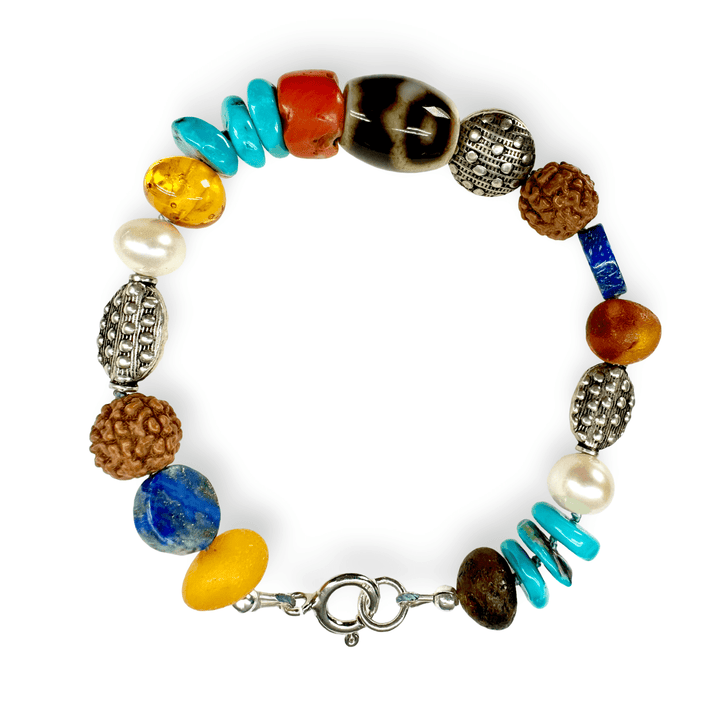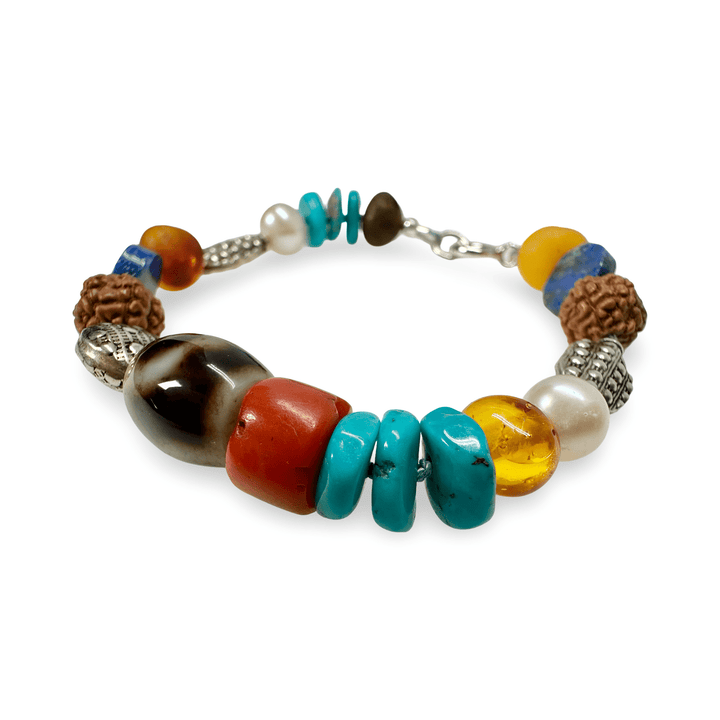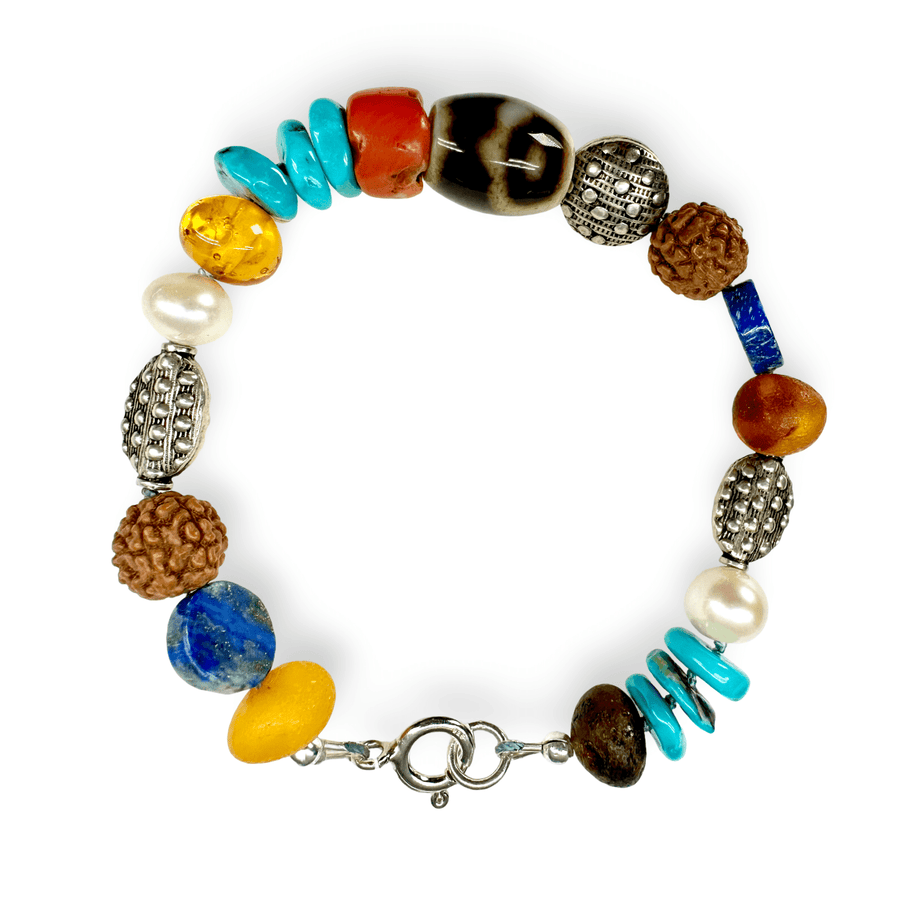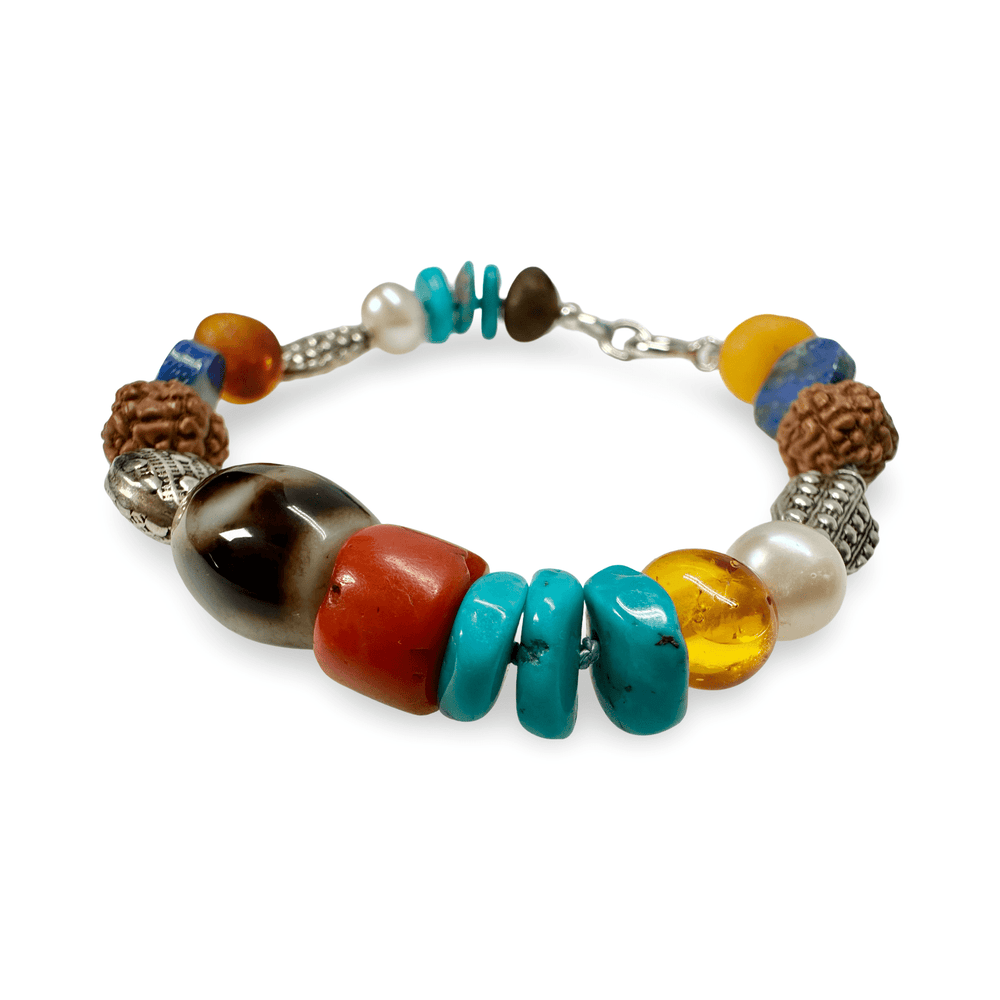Tibetan bracelet made from turquoise, dzi, coral, amber, rudraksha, silver and more
This cheerful and colorful bracelet combines a variety of jewelry materials and carries the quintessence of Tibetan jewelry culture, so to speak:
- Colorful semi-precious stones in various shapes (e.g. tumbled stones, lenses, round beads), including turquoise, carnelian, mother-of-pearl, lapis lazuli, amber-like stones and other colored minerals.
- Rudraksha: the seeds of the rudraksha tree, which play an important spiritual role in Hinduism and Buddhism.
- Dzi: the famous Tibetan agate beads, which are said to bring good luck.
- Turquoise is traditionally used in Tibetan jewelry as a symbol of protection, prosperity and health and is an important component of many spiritual and cultural amulets and pieces of jewelry.
- Amber symbolizesprotection, healing and wisdom. Monks and believers often wear amber as a talisman to ward off negative energies.
- In Tibet,freshwater pearls are considered a symbol of purity, wisdom and the connection to nature.
- Silver: Between the stones are decorative silver beads with a traditional pattern.
- Coral has a deep spiritual and cultural significance in traditional Tibetan jewelry. Nowadays, precious coral is strictly protected, which is why pieces of jewelry like this one are made with old, recycled coral.
Due to the variety of stones, the bracelet radiates liveliness and naturalness. Each stone has its own symbolism. The combination of warm tones (red, orange, yellow, brown) and cool nuances (blue, green, silver) creates a lively, balanced overall look
The bracelet is opened with a silver spring clasp and is available in two sizes.
Bracelets, bracelets, bracelets, bracelets, chains
| age | Wrist circumference |
|
Newborn |
9 - 12 cm |
|
6 months - 3 years |
12 - 14 cm |
|
4 - 10 years |
14 - 15 cm |
|
Teenager, ladies (XS) |
15 - 16 cm |
|
Ladies (M) |
16 - 17 cm |
|
Ladies (XL) |
18 - 19 cm |
|
Men (M) |
18 - 20 cm |
|
Men (XL) |
21 - 22 cm |
The length of the bracelet may be 1 cm to 3 cm longer than the measured wrist circumference, depending on your taste.
Finger rings
| Ring size | Inner diameter | Inner circumference |
|
48 |
15,3 mm |
48 mm |
|
50 |
15.9 mm |
50 mm |
|
52 |
16.6 mm |
52 mm |
|
54 |
17.2 mm |
54 mm |
|
56 |
17.8 mm |
56 mm |
|
58 |
18.5 mm |
58 mm |
|
60 |
19.1 mm |
60 mm |
|
62 |
19.7 mm |
62 mm |
|
64 |
20.4 mm |
64 mm |
|
66 |
21.0 mm |
66 mm |
- Take a ring that fits well.
- Place it on a ruler and measure the inner diameter (from one inner edge to the other).
- Compare the diameter with the table to determine the ring size.
- Take a thin strip of paper or thread.
- Wrap it around the part of the finger where you want the ring to sit (not too tight).
- Mark the point where the ends meet.
- Measure the length of the strip in millimeters. This is the inner circumference.
- Find the right size in the table.
- Measure the finger size in the evening, as fingers swell slightly during the day.
- If you are between two sizes, choose the larger size.
- Make sure that the ring fits over the knuckle.


